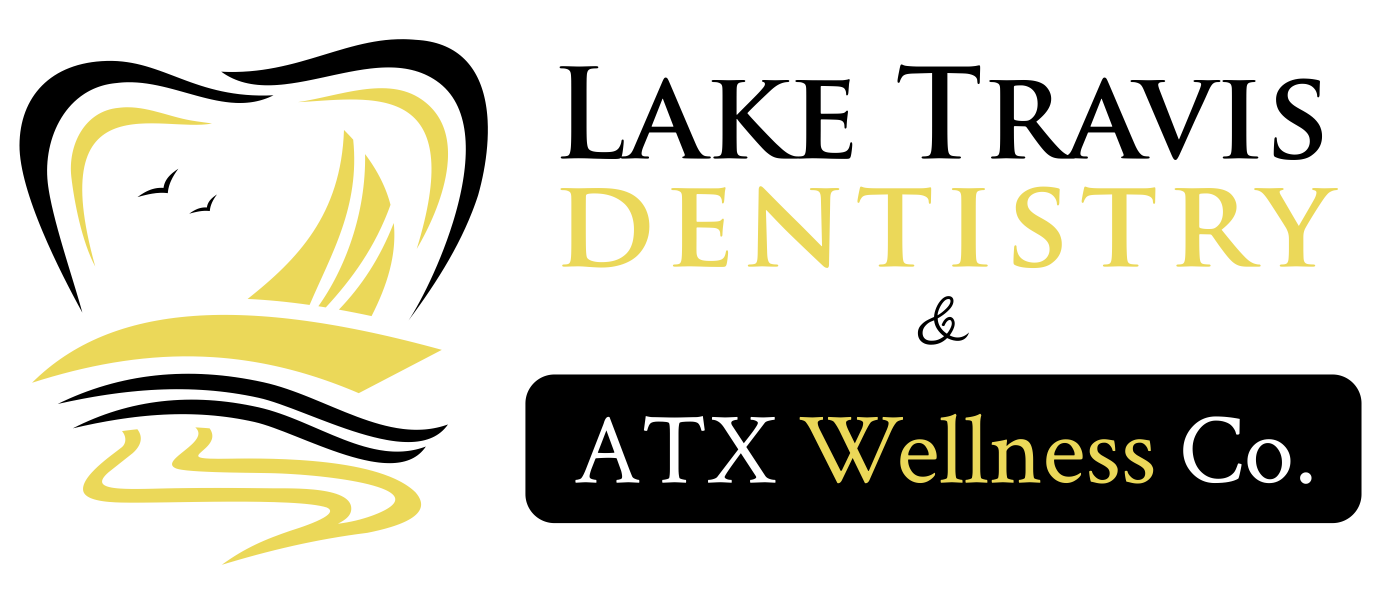- Membership
- Services
Integrated Wellness
Your journey to a radiant, healthy smile begins here!
- Insurance & Financing
- Smile Transformations
- Products
- About
Meet our accomplished team of doctors, devoted to providing expert care and personalized attention for your optimal dental well-being.
Get acquainted with our skilled and compassionate dental professionals—dedicated to ensuring your oral health and brightening your smile.
Here are the dental care blogs from Lake Travis Family & Cosmetic Dentistry. Our oral health blogs give you insights about dental treatments & oral health!
Get Invisalign Today and Save $1200

Dental Veneers in Lakeway, TX

Teeth that are brilliantly white, straight, and flawless; it’s something we all desire, particularly during our adolescent years. Whitening products and toothpaste can assist with sneaky methods like drinking coffee and soda through a straw.
But what if one of your or your child’s teeth is damaged, chipped, or genetically off-color or malformed? Dental veneers near you at Lake Travis Family & Cosmetic Dentistry could be the solution.
What Are Dental Veneers?
A “veneer” is a wafer-thin covering of material molded to the surface of a tooth to fix a chip or crack or improve its cosmetic appeal. Porcelain or a composite synthetic resin, such as acrylic polymer or polymethyl methacrylate, is used to make veneers. Veneers can be applied directly to a tooth at Lake Travis Family & Cosmetic Dentistry or created in a dental laboratory off-site.
Types Of Dental Veneers
There are two types of dental veneers, and the decision to employ one should be based less on personal preference and more on the shape of your or your child’s teeth.
Traditional Veneers
Traditional veneers are placed on teeth similarly to a crown. That is, portions of the tooth that are weak or decayed are removed, and the tooth is “formed” to give a mounting site for the veneer.
Even healthy teeth may require a little reshaping to get a natural appearance when the veneer is put on. Because the veneer is thick, not whittling down the tooth would result in a “bulky,” unnatural-looking tooth when contrasted to neighboring teeth.
Prepless Veneers
On the other hand, prepless veneers require very little (if any) tooth preparation. This is suitable in some cases, but it is usually confined to situations where there are gaps between teeth (such as a gap between two front teeth) or when the tooth being treated is smaller than the neighboring teeth.
FAQs
What is the difference between composite veneers and porcelain veneers?
Composite veneers and porcelain veneers are two popular options for improving the appearance of teeth. The key differences are:
- Composite veneers are made from tooth-colored resin composite materials, while porcelain veneers are made from a thin shell of porcelain material.
- Composite veneers can usually be applied in a single visit by bonding the composite material directly to the tooth surface. Porcelain veneers require more preparation, as a small amount of tooth enamel needs to be removed to accommodate the veneer, and the veneers are fabricated in a dental laboratory before being bonded to the teeth.
- Porcelain veneers are more durable and stain-resistant than composite veneers. Porcelain veneers typically last 10-15 years, while composite veneers may need to be replaced every 5-7 years.
- Composite veneers are generally less expensive than porcelain veneers. Composite veneers cost around $300-$450 per tooth, while porcelain veneers range from $720-$950 per tooth.
How much do dental veneers cost at Lake Travis Family & Cosmetic Dentistry?
Prices may vary based on each patient’s specific needs and number of teeth that need to be covered. But cost should not prevent you from reaching out. At Lake Travis Family & Cosmetic Dentistry, we offer a membership program that includes benefits such as free exams, x-rays, routine cleanings, 10% off Zoom whitening, up to 10% off all other services, and no waiting periods or maximums.
By joining our membership program, you can receive exclusive member discounts on veneers and other cosmetic dentistry services.
What are the downsides of dental veneers?
While dental veneers can dramatically improve the appearance of your teeth, there are some potential downsides to consider:
- Getting traditional porcelain veneers is an irreversible process, as a small amount of tooth enamel needs to be removed to accommodate the veneer shell. This means the tooth will always require a veneer or dental crown to protect it.
- Your teeth may be more sensitive to hot and cold foods and beverages after getting veneers, especially in the first few weeks after the procedure.
- Veneers can chip, crack, or become dislodged if exposed to excessive force or hard objects. You may need to avoid biting into very hard foods.
- Veneers can be a costly cosmetic procedure, especially for porcelain veneers or if multiple teeth need to be treated.
How long do tooth veneers last?
The lifespan of dental veneers can vary depending on the type of veneer material and how well you care for them:
- Composite Veneers: Typically last 5-7 years before needing replacement.
- Porcelain Veneers: Can last 10-15 years or longer with proper care and maintenance.
Factors that can affect the longevity of veneers include:
- Grinding or clenching habits
- Exposure to staining foods and beverages (like coffee, tea, or red wine)
- Biting on hard objects
- Poor oral hygiene and lack of professional cleanings
With good oral hygiene habits, avoiding excessive force on the veneers, and regular checkups with your dentist, they can potentially last over a decade before needing replacement.
What happens to teeth under veneers?
When traditional porcelain veneers are placed, a small amount of tooth enamel (usually around 0.5 mm) needs to be removed from the front surface of the tooth to accommodate the veneer shell. This is an irreversible process, as the enamel cannot regrow. The remaining tooth structure under the veneer is still viable and receives nourishment from the inner pulp.
However, without the protective enamel layer, the tooth may be more susceptible to sensitivity, decay, and potential nerve damage if the veneer chips or cracks. For this reason, it’s important to maintain good oral hygiene, avoid biting on hard objects, and have the veneers checked regularly by your dentist. If a veneer does become damaged or dislodged, it should be repaired or replaced promptly to protect the underlying tooth structure.
What are no-prep veneers?
No-prep veneers, also known as prepless veneers, snap-on veneers, or pop-on veneers, are a type of veneer that can be applied directly to the tooth surface with minimal or no tooth preparation required. These dental veneers are very thin (around 0.3-0.5 mm thick) and are designed to fit over the front surface of the tooth.
No-prep veneers are a more conservative option than traditional porcelain veneers, as they don’t require the permanent removal of tooth structure. However, they may not be suitable for everyone, as they can look bulky or unnatural if the tooth is significantly misshapen, malformed, or if there are large gaps between teeth. While no-prep veneers are less invasive, they may not last as long as traditional veneers and may need to be replaced more frequently.
Can veneers be removed?
Traditional porcelain veneers are considered a permanent cosmetic procedure, as a small amount of tooth enamel needs to be removed to accommodate the veneer shell. Once this enamel is removed, it cannot be replaced, and the tooth will always require a veneer or dental crown to protect it. Attempting to remove traditional veneers can damage the entire tooth structure.
However, some types of veneers, such as composite resin veneers or no-prep veneers, can potentially be removed or replaced without permanently altering the tooth structure. These types of veneers are considered more temporary or as removable veneers.
It’s important to note that removing any type of veneer, even if it is not the traditional porcelain type, can still cause some damage or sensitivity to the tooth surface. It’s generally recommended to have veneers replaced or repaired as needed, rather than attempting to remove them entirely.
If you are considering having your veneers removed or replaced, it’s best to consult with your dentist to discuss the potential risks and options for your specific situation.
What types of dental veneers are available?
There are several types of veneers available, including:
- Traditional Porcelain Veneers: These are custom-made shells of porcelain material that are bonded to the front surface of the tooth after some enamel removal.
- Composite Resin Veneers: These veneers are made from tooth-colored composite resin material and can be applied directly to the tooth surface with minimal or no tooth preparation.
- No-Prep Veneers (Snap-On, Pop-On): These ultra-thin veneers can be applied directly to the tooth surface without any enamel removal, making them a more conservative option.
- Temporary Veneers: These are usually made from composite resin and are placed temporarily while permanent veneers are being fabricated in a dental lab.
Can dental veneers be used to fix broken, chipped, or misshapen teeth?
Yes, veneers are an excellent cosmetic dentistry solution for fixing various dental imperfections, including broken, chipped, misshapen, or malformed teeth. Veneers can cover up these flaws and provide a natural-looking, uniform smile.
Depending on the extent of the damage or misshaping, your dentist may recommend traditional porcelain veneers or composite veneers. In some cases, a combination of veneers and other dental treatments, such as tooth contouring or bonding, may be used to achieve the desired results.It’s important to have a consultation with a cosmetic dentist to determine the best approach for your specific dental concerns and desired outcome.
How many veneers do I need?
The number of veneers needed can vary depending on your specific cosmetic goals and the condition of your natural teeth. In general, veneers are typically applied to the front teeth that are visible when you smile, which can range from as few as one veneer to as many as 10 or more. Your dentist will evaluate your smile and recommend the appropriate number of veneers to achieve a natural, harmonious look.
In some cases, veneers may be applied to only the front six or eight teeth, while in other cases, veneers may be needed on all of the visible teeth.It’s important to have a thorough consultation with your dentist to discuss your desired outcome and determine the appropriate number of veneers needed to achieve your cosmetic goals.
Can veneers be placed on unhealthy teeth?
Veneers are primarily a cosmetic dental treatment and are not recommended for teeth that are severely decayed, have large fillings, or have other significant structural issues. In these cases, a dental crown or other restorative treatment may be more appropriate.
However, if the underlying tooth structure is generally healthy, with minor imperfections or cosmetic concerns, veneers can be a suitable option. Your dentist will thoroughly evaluate the condition of your teeth and may recommend addressing any underlying dental issues before proceeding with veneers.
Our Doctors




